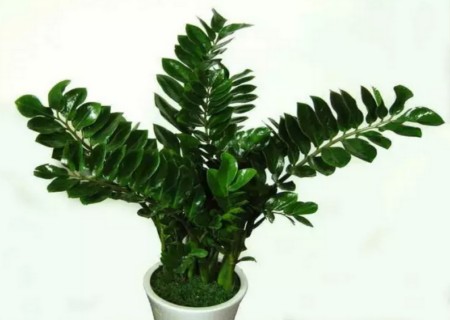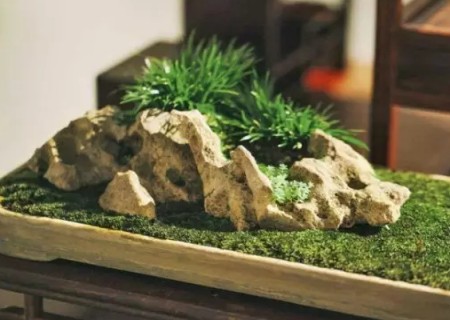Maintenance method of bonsai of ginkgo trees
Ginkgo biloba trees are graceful, simple and elegant, and are often made into bonsai to be presented to the world. In the last article, the editor has explained to you how to make ginkgo bonsai. I don't know if you have learned it. If you haven't learned it, you can review your lessons again. Today, we're going to tell you how ginkgo bonsai is preserved.

1. Soil
Before talking about soil requirements, let's review the pot options for growing ginkgo bonsai. As the root system of Ginkgo biloba is very deep, we must choose a deeper pot when planting Ginkgo biloba. And ginkgo on the soil requirements are also very simple, as long as the soil is fertile and loose, conducive to water permeability on the line, it is recommended to choose sandy soil. Of course, if it is a loam with a lot of humus, so much the better.
2. Environment
Because ginkgo biloba is a sun-loving plant, we usually have to put it in an environment with plenty of sunshine, good air circulation and relatively high humidity. Of course, although ginkgo likes light, it should also be given proper shade in the hot summer; ginkgo is cold-resistant and can be put outdoors in winter, but when the temperature is too low, it is best to bury the basin in the soil, so as to avoid frostbite and affect plant growth.
3. Watering
Ginkgo likes a humid environment, so the potted soil should not be too dry. Under the hot weather in summer, because the leaves of Ginkgo biloba are huge, it is easy to evaporate a large amount of water, so it should be replenished in time. Usually replenish water in the morning and evening, and continue every day, can not be interrupted, after entering the autumn, you can appropriately reduce watering. It should be noted that although ginkgo likes to be wet, it can not allow stagnant water in the basin. Long-term stagnant water not only affects plant growth, but also causes damage to the root system.
4. Fertilization
Spring and summer is a period of exuberant growth of ginkgo biloba, so we need to replenish it, usually with some thin cake fertilizer or human and animal feces, so as to ensure the supply of nutrients while the plant grows rapidly. and the leaf color will remain bright. After entering the winter, we need to give ginkgo bonsai proper topdressing, but the choice of fertilizer is also required, it is recommended to choose organic fertilizer, such as rotten cake fertilizer.
5. Pruning
Since it is a bonsai, there can be no lack of ornamental, so the pruning work during the maintenance and management is very important. As the leaves of Ginkgo biloba are huge, we have to prune the branches and leaves. If the branches and leaves are too luxuriant, it is bound to affect the appreciation of the bonsai of Ginkgo biloba. Of course, we should also carry out proper banding on it, so that it can not only maintain its original graceful posture, but also improve its appreciation.
6. Turn the basin
Turning the basin is also an important link in the process of maintenance and management of ginkgo bonsai, but the right time must be chosen. It is usually possible to turn the basin every 2 years, and it is appropriate to do it in early spring. At that time, the root system of ginkgo bonsai was very developed, so in the process of turning the basin, the excessively long root system could be trimmed, some old soil could be removed and some new soil could be replaced.
These are the maintenance and management methods of ginkgo bonsai. I believe that as long as we do a good job in maintenance and management in accordance with the above methods, I believe that your ginkgo bonsai will be strong and bright.
Time: 2019-05-31 Click:
- Prev

How to raise money trees in pots
The money tree has the meaning of good luck and wealth, so it is very suitable to put its potted plants in the indoor living room, which can not only increase the wealth of the family, play a role in attracting wealth, but also absorb substances harmful to the human body. So, do you know how to raise a potted cash tree with such a use?
- Next

How to maintain the bonsai of Calamus calamus
Acorus calamus is evergreen all the year round, and its leaves are bright. Planting in front and back of the house can not only beautify the environment, but also bring vitality to the surrounding environment. Therefore, calamus calamus is widely used in garden planting. In addition, Acorus calamus has a strong ability to adapt to the environment, even if it grows in a harsh environment.
Related
- Fuxing push coffee new agricultural production and marketing class: lack of small-scale processing plants
- Jujube rice field leisure farm deep ploughing Yilan for five years to create a space for organic food and play
- Nongyu Farm-A trial of organic papaya for brave women with advanced technology
- Four points for attention in the prevention and control of diseases and insect pests of edible fungi
- How to add nutrient solution to Edible Fungi
- Is there any good way to control edible fungus mites?
- Open Inoculation Technology of Edible Fungi
- Is there any clever way to use fertilizer for edible fungus in winter?
- What agents are used to kill the pathogens of edible fungi in the mushroom shed?
- Rapid drying of Edible Fungi

